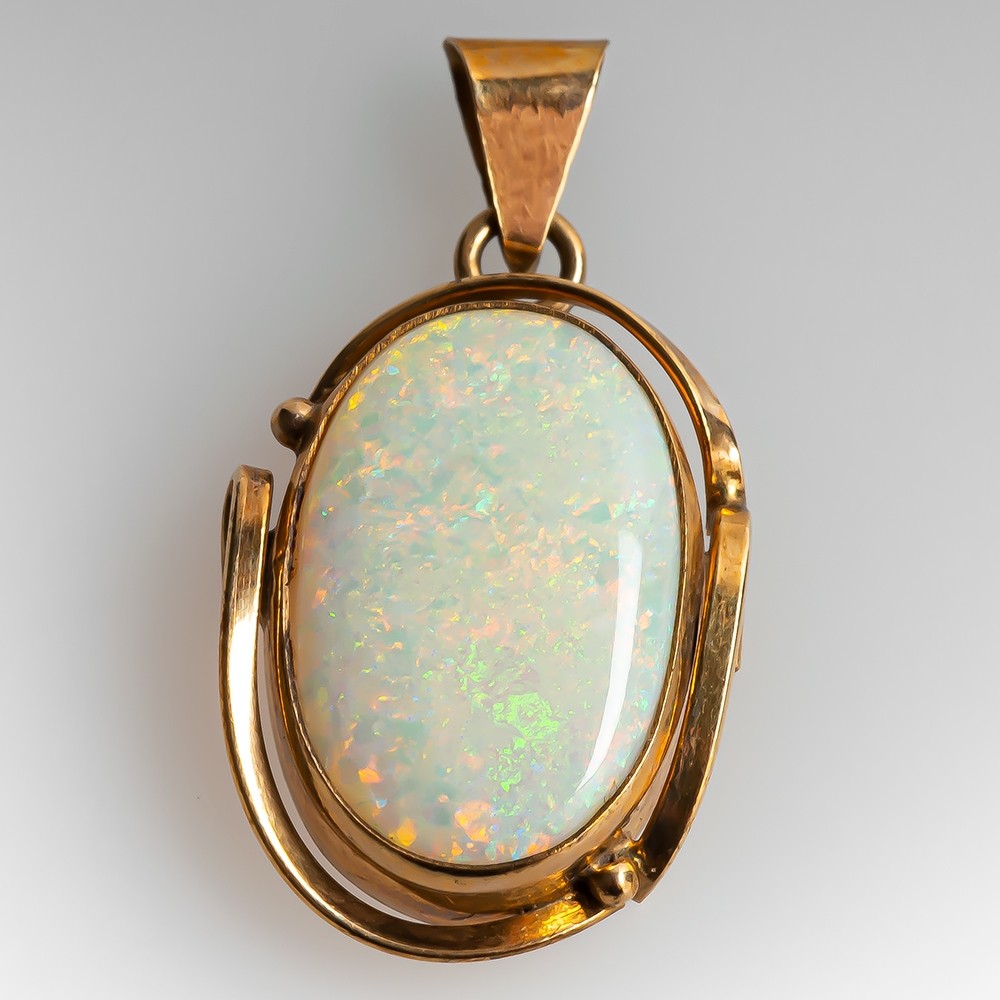
Posted in: Jewelry History
 White opal is one of the modern birthstones for October. It also provides support and benefits for the Zodiac signs Taurus and Libra. The history of white opal traces as far back as 4,000 BC. Since ancient times, white opal has been called "Queen of the Gems." (source)
White opal is one of the modern birthstones for October. It also provides support and benefits for the Zodiac signs Taurus and Libra. The history of white opal traces as far back as 4,000 BC. Since ancient times, white opal has been called "Queen of the Gems." (source)
Early History of White Opal
Archaeologists discovered the earliest relics made from white opal in a cave in Kenya. Geologists determined that these relics date back to 4,000 BC. (source) Fairly unstable and colored utilitarian brown, this opal likely originated in Ethiopia and was used for making tools. (N. Barot, 1994) Meanwhile, the first gem-quality white opal was found thousands of years later in the mines of Czechoslovakia and Hungary. (source) It is these precious gems that made their way to ancient Rome, where scholars wrote about them as early as 250 BC. (source) The Hungarian mines continued to supply precious white opal for over 2,000 years, until 1922, when the mines ran dry. (source) Romans considered opals the ultimate gemstone, as they harnessed every gemstone color within one stone. Of course, the Greeks also fell in love with white opal, believing that they protected their wearers from illness and opened the third eye to receive visions and prophecies. During the Middle Ages, white opal granted special powers to those with blonde hair. Furthermore, some believed opal could make one invisible. For the majority of its early history, opals provided many benefits and held positive associations. But that changed, thankfully briefly, in the early 1800s.
A Brief Superstitious Decline
In 1829, Sir Walter Scott published his novel, Anne of Geuerstein. The tragic main character, Lady Hermione, perished soon after a drop of water touched her opal and drained its color. (source) His readers believed Sir Scott was warning of the perils of wearing opal. This, combined with Empress Eugenie's strong suspicions against opal, led to a rapid decline in demand for opals. In fact, reports estimate that within months of the book's release the demand for opals dropped by 50%. (source) Speaking of Empress Eugenie, she received many opal gifts from her husband Napoleon III. However, worried that they would lead to her death, she refused to wear them.
Contemporary Resurgence
Fortunately, Queen Victoria snubbed her nose at the superstitions of her friend, the Empress. Indeed, she gave each of her daughters white opals as wedding gifts. (source) Just as the Hungarian mines began running low, new supplies of white opal popped up in Australia. In the late 1800s, white opals were found in several locations, including Coober Pedy, Andamooka, and Mintabie. (source) These stones surpassed every source of white opal in clarity and play of color. In addition to white opals, Australia also produced black and boulder opals. Queen Victoria began wearing black opals, and soon after the most important jewelry houses, such as Tiffany and Cartier, began designing with the beautiful new stones. (source) Since then, Australia has dominated the market, producing as much as 90% of the world's supply of black, boulder, and white opal. (source) ~Angela Magnotti Andrews4 years ago
11 view(s) 